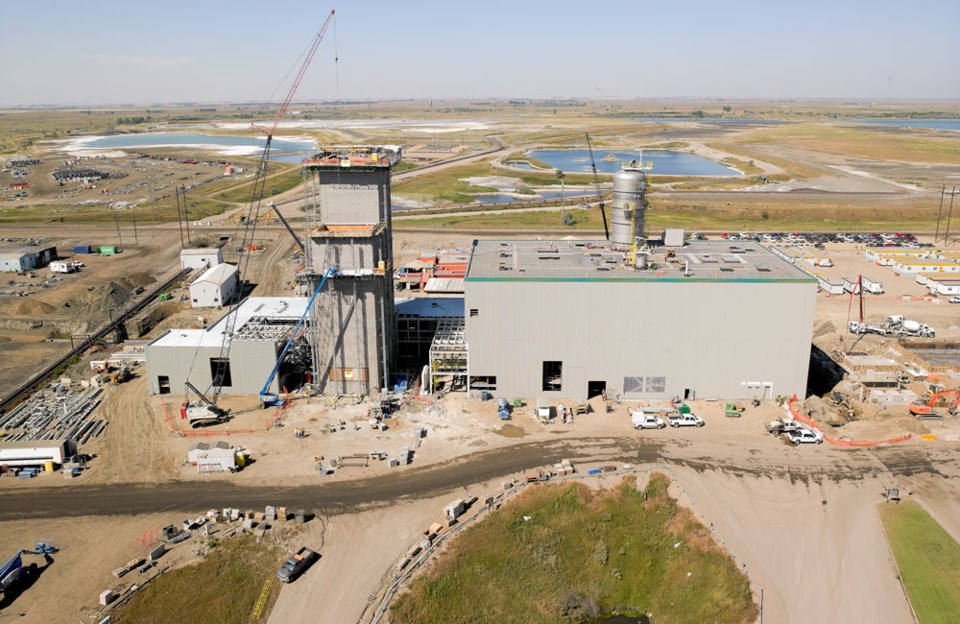Reliance on coal-based power via Boundary Dam’s Carbon Capture and Sequestration (CCS) facility is costing electricity users and preventing the province from adopting a diversified energy sector, says president and founder of Saskatchewan Community Wind James Glennie.
While other provinces obtain electricity from a balanced selection of renewable energy and fossil fuels, Saskatchewan has the proportion of electricity generated by wind in Canada and one of the greenhouse gas emissions generated by the power sector in Canada and the world.
Glennie said the lack of discussion with other parties regarding energy-related projects, like the retrofitted carbon capture unit at Boundary Dam, is part of the problem.
“I think it would be nice for SaskPower to sit down and say ‘let’s talk about this,’” he said. “It’s not just me; the entire wind industry in Canada wants to talk with SaskPower and have a discussion about a balanced generation portfolio.”
Glennie said Sask Wind submitted an unsolicited power proposal plan for SaskPower in October 2013. The proposal was rejected in January 2014. It was the last time the parties communicated.
“Through 2014, I wrote extensive emails to them asking for dialogue, asking to talk about this and asking specific questions, and they wouldn’t respond to any of them.
“That’s really what led to the publication of this report,” Glennie explained. SaskPower has provided a timeline of communication, showing a number of responses to Glennie since 2014, though Glennie said none of the responses has been to his satisfaction.
In an emailed response to the Mercury, Mike Monea, President of Carbon Capture and Storage Initiatives at SaskPower, said SaskPower has “ongoing discussions with different suppliers and associations,” but wouldn’t address any previous interactions with Sask Wind when asked about the suggested previous meetings with them.
Monea made mention of SaskPower’s net metering program and small power producers program, which are largely used by small wind and solar producers. Both programs offer customers a rebate for installing the equipment.
The criticism behind BD3’s cost and the financial burden some critics say it places on electricity users and SaskPower – issues which have been outlined in Sask Wind’s analysis and a from the Canadian Centre for Policy Alternatives of Saskatchewan (CCPAS) – is no surprise to Monea.
“Some reports have erroneously tried to assign an economic value to the CCS component, separate from the power plant,” he wrote. “CCS is an integrated part of the power project and our analysis at the business case stage showed that this project was as good as natural gas for costs, significantly better than natural gas for emissions and significantly better than wind for providing stable baseload power.”
The CCPAS’ report on BD3 stressed the importance of moving away from the traditional baseload, intermediate and peaking power sources to allow for the integration of wind, and potentially solar, with an updated electrical grid.
Monea has said that removing fossil fuels from their power generation system is “unrealistic,” but unlike the CCPAS’ report that suggested the abandonment of coal in favour of greater reliance on alternate renewable sources, Glennie said the amalgamation of fossil fuels and alternate sources, specifically wind, is entirely possible.
According to saskwind.ca, 10 U.S. states, including Iowa and North Dakota, have their usage of wind turbines over the past eight years. Eight of those 10 states were generating less of their electricity from wind than Saskatchewan prior to 2006.
Saskatchewan’s wind energy share has declined from 2.9 per cent to 2.8 per cent during that same eight-year period.
Glennie said a reasonable balanced generation portfolio could be one that included various forms of energy sources, like wind, solar, hydro, gas and coal, each contributing 20 per cent to the total power being generated.
“You might want to change some of those numbers to increase the amount of biomass in the system, since we have a huge biomass resource in this province,” he said.
“One of the ironies is that SaskPower says ‘we’re pursuing a balanced generation portfolio,’ but it just isn’t,” Glennie said. “Based on the projects they’ve announced, their power generation portfolio for the next 15 years is going to 75 per cent gas and coal. That isn’t balanced.”
According to saskpower.com, 44 per cent of Saskatchewan’s power in 2014 came from coal, while 28 per cent came from gas.
Saskatchewan Wind is a group dedicated to the growing awareness of wind energy potential in the province and encourages the development of community-owned wind farms.


.png;w=120;h=80;mode=crop)

